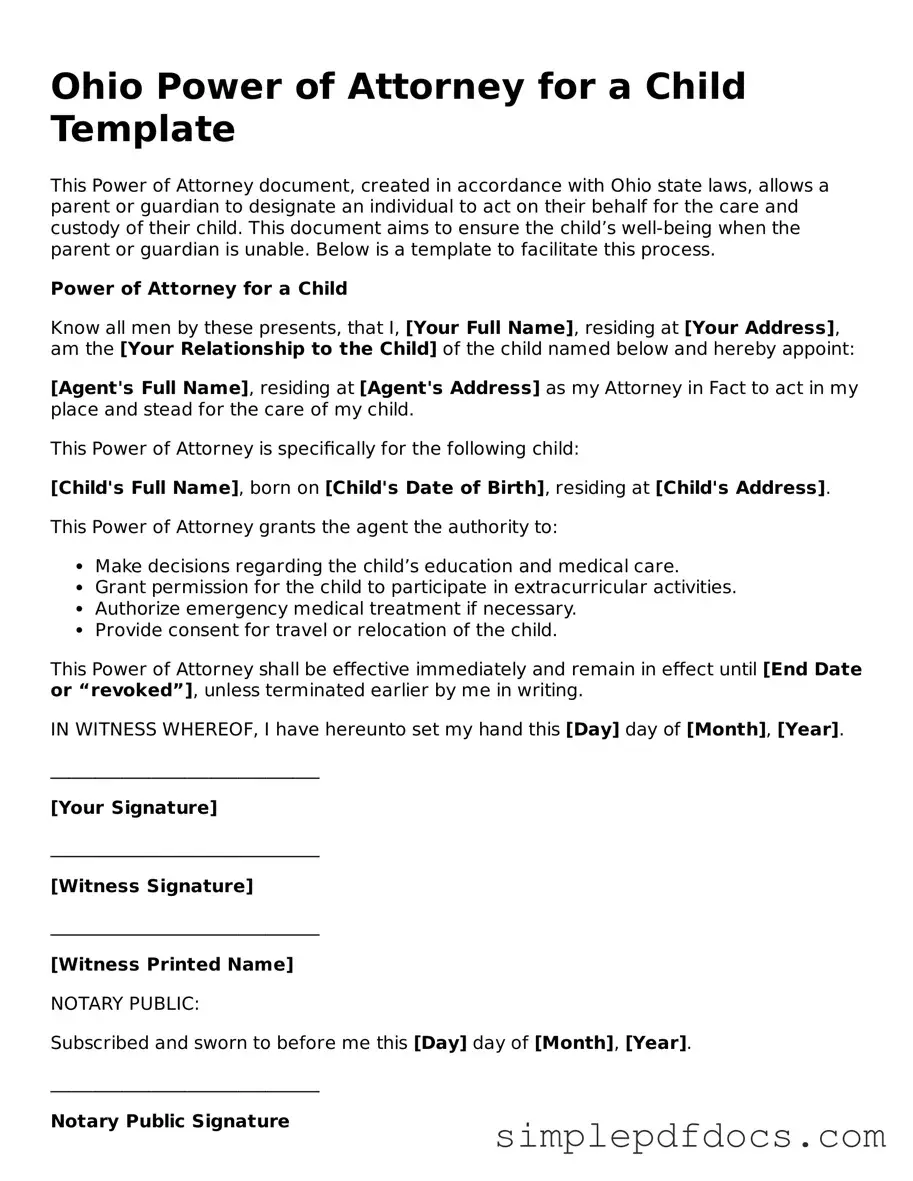The Ohio Power of Attorney for a Child form serves as a critical legal document that allows a parent or legal guardian to designate another individual to make decisions on behalf of their child. This form is particularly useful in situations where the parent may be temporarily unavailable due to travel, medical emergencies, or other circumstances. By completing this document, the parent grants authority to the designated agent to manage various aspects of the child's welfare, including medical care, education, and general day-to-day decisions. It is essential to understand that the authority granted through this form is limited to the specific powers outlined within it, ensuring that the child's best interests remain the primary focus. Additionally, the form requires the signatures of both the parent and the designated agent, as well as the acknowledgment of a notary public, to ensure its validity. Understanding the implications and requirements of the Ohio Power of Attorney for a Child form is vital for parents seeking to secure their child's well-being in their absence.
